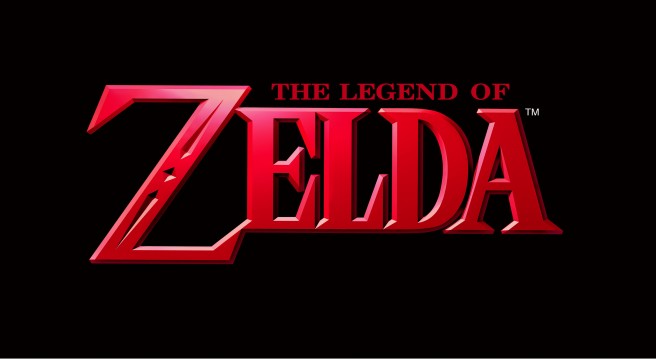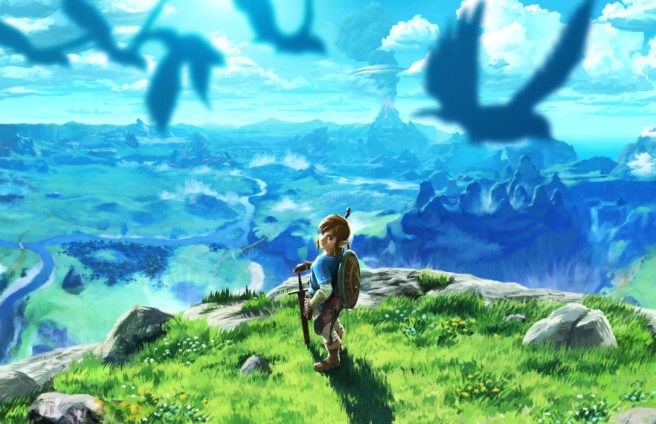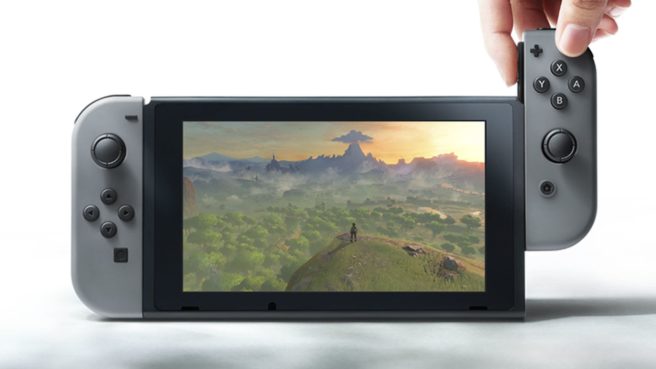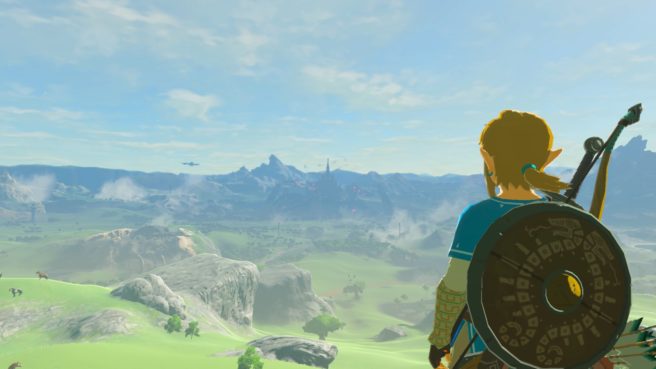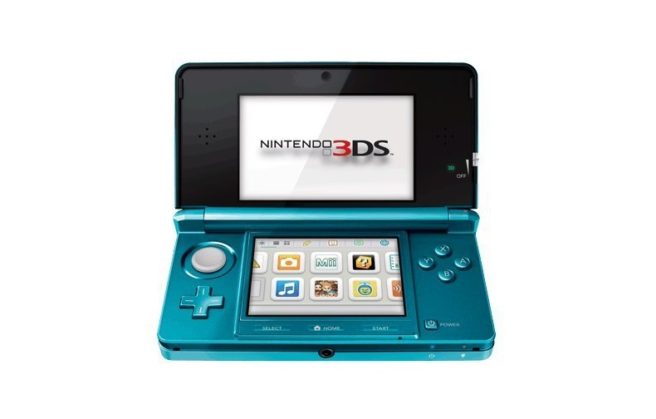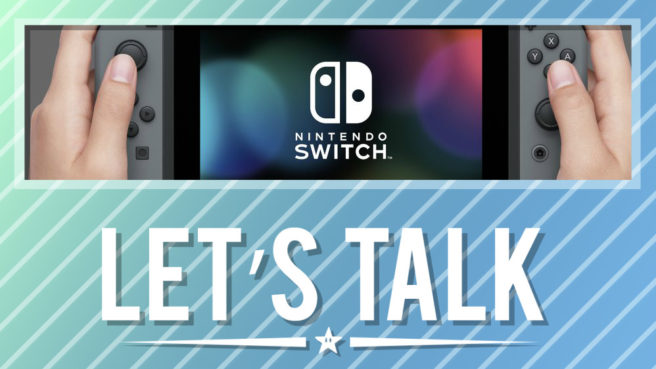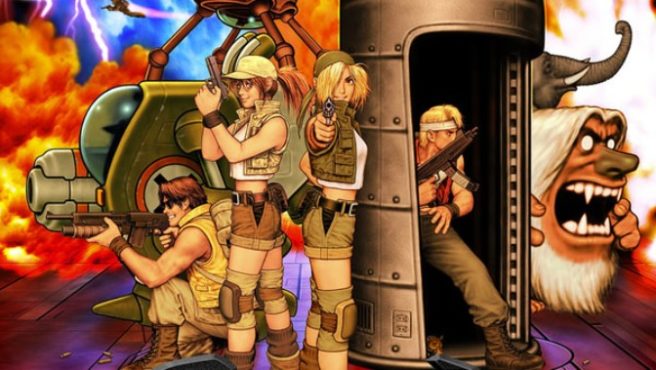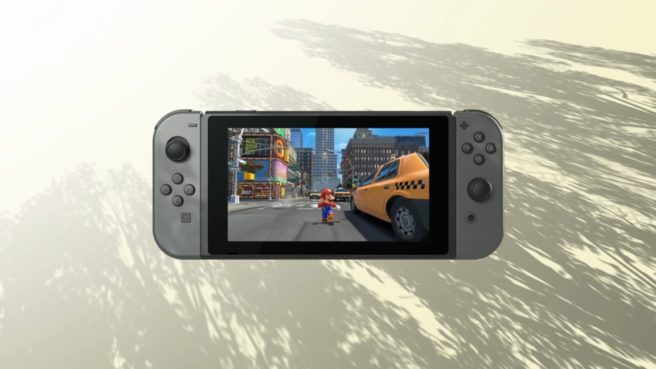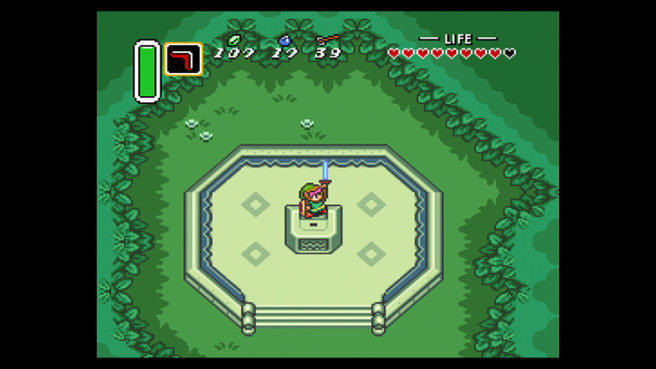New 30th anniversary Zelda amiibo potentially spotted in Breath of the Wild’s files
Posted on 7 years ago by Brian(@NE_Brian) in General Nintendo, News | 37 Comments
Four Zelda amiibo are already out as part of the series’ 30th anniversary. However, Nintendo may have even more figures in store.
Hidden away in Zelda: Breath of the Wild’s files are listings for a few potentially unannounced amiibo. Head past the break for more.
Nintendo Download (03/02/17, Europe): The Legend of Zelda: Breath of the Wild
Posted on 7 years ago by Matt(@OnePunchMaz) in 3DS eShop, News, Wii U eShop | 1 Comment
This week’s European Nintendo Downloads are as follows:
Wii U Retail
The Legend of Zelda: Breath of the Wild (available March 3rd) – €69.99 / £59.99 / CHF 89.90
Wii U Download
Ghost Blade HD – €8.99 / £8.09 / CHF 12.60
Wii U DLC
The Legend of Zelda: Breath of the Wild – Expansion Pass – €19.99 / £17.99 / CHF 28.00
Minecraft: Wii U Edition – Fallout Battle Map Pack – €2.99 / £2.39 / CHF 3.00
3DS Download
Brave Dungeon – €4.99 / £4.49 / CHF 7.00
Parascientific Escape – Gear Detective – €5.00 / £4.79 / CHF 6.20
3DS Themes
Hello Kitty with her friends – €0.99 / £0.89 / CHF 1.40
Hello Kitty and diamonds – €0.99 / £0.89 / CHF 1.40
More: Europe, Nintendo Download, top
[Just a Chat] Switch and Zelda: Breath of the Wild impressions
Posted on 7 years ago by Brian(@NE_Brian) in Just a Chat, Switch, Videos | 2 Comments
Just a Chat finally returns after a very lengthy hiatus. What better time to bring it back now that we have access to the final Switch hardware and The Legend of Zelda: Breath of the Wild?
It wouldn’t be a return without some audio issues! I ended up having some problems, but fortunately it didn’t affect the discussion much since Dennis did most of the talking. After all, Dennis has been the one playing Zelda: Breath of the Wild a ton over the past few days!
Zelda: Breath of the Wild director on breaking series conventions, developing the world, more
Posted on 7 years ago by Brian(@NE_Brian) in News, Switch, Wii U | 46 Comments
Over the past couple of weeks, Famitsu and 4Gamer both conducted interviews with The Legend of Zelda: Breath of the Wild director Hidemaro Fujibayashi. A lot of what was said has been covered extensively in previous interviews with Shigeru Miyamoto and series producer Eiji Aonua, but there were still some noteworthy excerpts. This was also one of the first times that we actually heard from Fujibayashi about the game.
According to Fujibayashi, the developers’ main goal was to break conventions, but they weren’t sure how far they should go to do so. During development, they took a look at what was core to Zelda games, and decided it was the sense of relief you feel after solving a puzzle. So with that as a base, they tried bringing dungeon gameplay to the field, and field gameplay to the dungeons. Puzzles were created with certain solutions in mind, but left open to the possibility of being solved by using other methods. They tried to fix the parts of puzzle-solving people found boring while keeping the interesting parts intact, and changed anything they saw as “standard” to be “nonstandard.”
Happy sixth anniversary, 3DS
Posted on 7 years ago by Brian(@NE_Brian) in 3DS, News | 13 Comments
It’s a big day for 3DS. Way back on February 26, 2011, the handheld debuted in Japan. That makes the 3DS six years old.
3DS still has life in it all of these years later, as Nintendo continues to produce software for the system. On top of that, there are apparently plans for 2018 as well. So while Switch approaches and also offers portable functionality, 3DS appears to be here to stay… at least for now. Mario Sports Superstars, Pikmin, and Ever Oasis are among the titles to look forward to this year.
More: top
[Let’s Talk] Will you play Switch more as a console or a portable?
Posted on 7 years ago by Brian(@NE_Brian) in Let's Talk, Switch | 124 Comments
There are two big ways to play Switch. You can use the system as a traditional home console, but Nintendo is also offering an option to play it as a handheld. So as a simple question for you this week: which one do you see yourself preferring?
I’ll probably end up using Switch more as a portable system personally. These days, I’m so busy and caught up with a bunch of different things that I find it difficult to be in front of a television for an extended period of time. I really do like how the portable option lets you play anywhere and easily come back to a gaming session. That being said, I definitely won’t be playing Switch exclusively as a handheld. I know that I’ll want to at least have Zelda on the big screen at some points, for example. Thankfully the Switch dock makes moving between both modes very simple.
That’s just me though. Curious to see what everyone else has planned!
Highlights from last week’s topic: Will you still pick up Zelda: Breath of the Wild on Wii U?
What to expect from Switch’s day one update
Posted on 7 years ago by Brian(@NE_Brian) in News, Switch | 32 Comments
A couple of days ago, Nintendo finally made mention of Switch’s day one update. However, the company didn’t really explain what we can expect from the patch. Now that we’ve received some information straight from Nintendo, we have a few more details.
The update will provide access to network features including the eShop, online gameplay, ability to share images via social media, and more. You’ll also be able to link Nintendo Accounts. Also noted is that the update lets you “connect online using hotspots that require authentication, such as at a hotel or café. A web applet will open up so the user can sign-in or accept terms of use.”
More: top
Hamster on bringing Arcade Archives to Switch, more games planned
Posted on 7 years ago by Brian(@NE_Brian) in News, Switch eShop | 51 Comments
This week, Famitsu provides yet another feature on Switch. The magazine interviews Satoshi Hamada from Hamster about the company’s Arcade Archives plans and more.
Hamster received requests from fans to bring the Arcade Archive series to portable devices. Since Switch acts as a handheld in addition to a console, they thought this would fulfill these wishes.
The Arcade Archive series has a feature to rotate the screen to play vertically-displayed arcade games. With Switch, you can easily stand the display vertically, so he think it’ll well fit for the system.
More: Arcade Archives, Famitsu, Hamster, Satoshi Hamada, top
Latest Switch tech details, including new mode that boosts mobile clocks by 25 percent
Posted on 7 years ago by Brian(@NE_Brian) in News, Switch | 106 Comments
Digital Foundry published a lengthy report about the technical details surrounding Switch today. The piece is highlighted by the reveal of a new, optional handheld mode that boosts mobile clocks by 25 percent.
Here’s the rundown:
– Digital Foundry says Switch’s “build quality and design is excellent”
– 4310mAh, 16Whr battery takes up a good portion of the internal space
– Apparently “third party replacements by the end-user shouldn’t be too difficult”
– Switch is held together by screws
– Detachable microSD card reader
– This seems to sit on top of the heat-shield when the unit is first opened
– 32GB of eMMC NAND storage also seems to occupy its own mini-daughterboard, as opposed to being soldered directly onto the mainboard
– This offers Nintendo the chance to more easily produce premium SKUs with more generous storage capacity, while retaining the same mainboard
– Heat pipe siphons heat away from the Nvidia Tegra processor
– Active cooling is available to stop the processor overheating, ensuring consistent performance
– Seems to be a more lightly modified X1, still on the 20nm process
– Nintendo has added to the available performance modes available to developers in a recent update
– This bumps the mobile GPU power
– A new ‘NX add-on’ note introduces an expanded table of operating modes
| Available CPU Speeds | Available GPU Speeds | Available Memory Controller Speeds | |
|---|---|---|---|
| Undocked | 1020MHz | 307.2MHz/384MHz | 1331.2MHz |
| Docked | 1020MHz | 307.2MHz/384MHz/768MHz | 1331.2MHz/1600MHz |
– Developers can opt for a 384MHz GPU clock – a straight 25 per cent uplift in compute power compared to the default 307.2MHz option
– Both frequencies are available to developers in what it calls ‘normal mode’ operation
– Users can’t choose between them
– Adjustments have been made to available memory bandwidth
– 1600MHz option is now only available in ‘boost mode’ (when Switch is docked)
– 1600MHz support in mobile mode is deprecated
– Devs can opt to run handheld modes while in the dock too
– Documentation has no new modes for docked performance
– Not all games will use the 384MHz GPU mobile mode
– 307.2MHz remains the default option
– The expanded table above still shows memory frequencies in line with Tegra X1’s capabilities and a look at the Chinese Switch teardown shows two Samsung LPDDR4 modules in parallel, in exactly the same configuration used in Shield Android TV
– The only difference seems to come from the capacity of the RAM chips
– Shield uses two 1.5GB modules
– Switch ups that to a 2x 2GB configuration for 4GB of total system memory
– Configuration suggests a 64-bit memory bus
– Switch has a processor that looks like a Tegra X1, with specs from Nintendo in line with X1, and power consumption that fits the characteristics of the chip’s 20nm fabrication process
– Digital Foundry says Switch is “by far and away the most powerful handheld console ever made, backed by a dedicated API designed to extract maximum performance from the hardware”
– Gulf in performance between mobile and docked configurations is considerable
This is just a summary of Digital Foundry’s report. You can find even more information here.
More: top
Nintendo on Zelda: Link to the Past – scrapped idea, working with SNES, Master Sword importance, more
Posted on 7 years ago by Brian(@NE_Brian) in General Nintendo, News | 5 Comments
It’s not often that Nintendo talks about past Zelda games. Right now, all eyes are focused on Breath of the Wild. But in this month’s issue of RetroGamer, the magazine caught up with Zelda: A Link to the Past director Takashi Tezuka and script writer Kensuke Tanabe to look back on the classic game.
Most of the comments we have are from Tezuka, who talked about the game’s structure, scrapped idea, and more. Tanabe also chimed in with Tezuka at one point to talk about the advantages of working with the SNES at the time.
Head past the break for a rundown of Tezuka and Tanabe’s comments.
